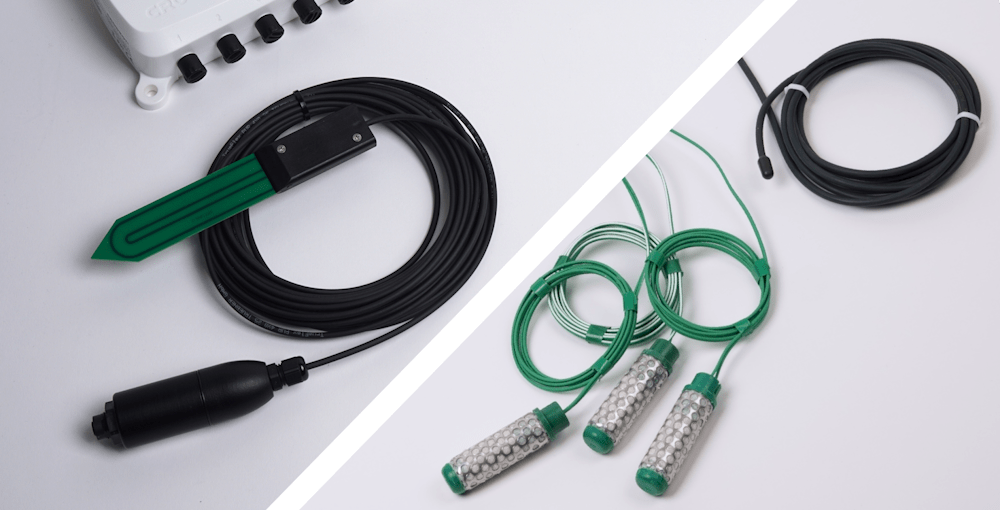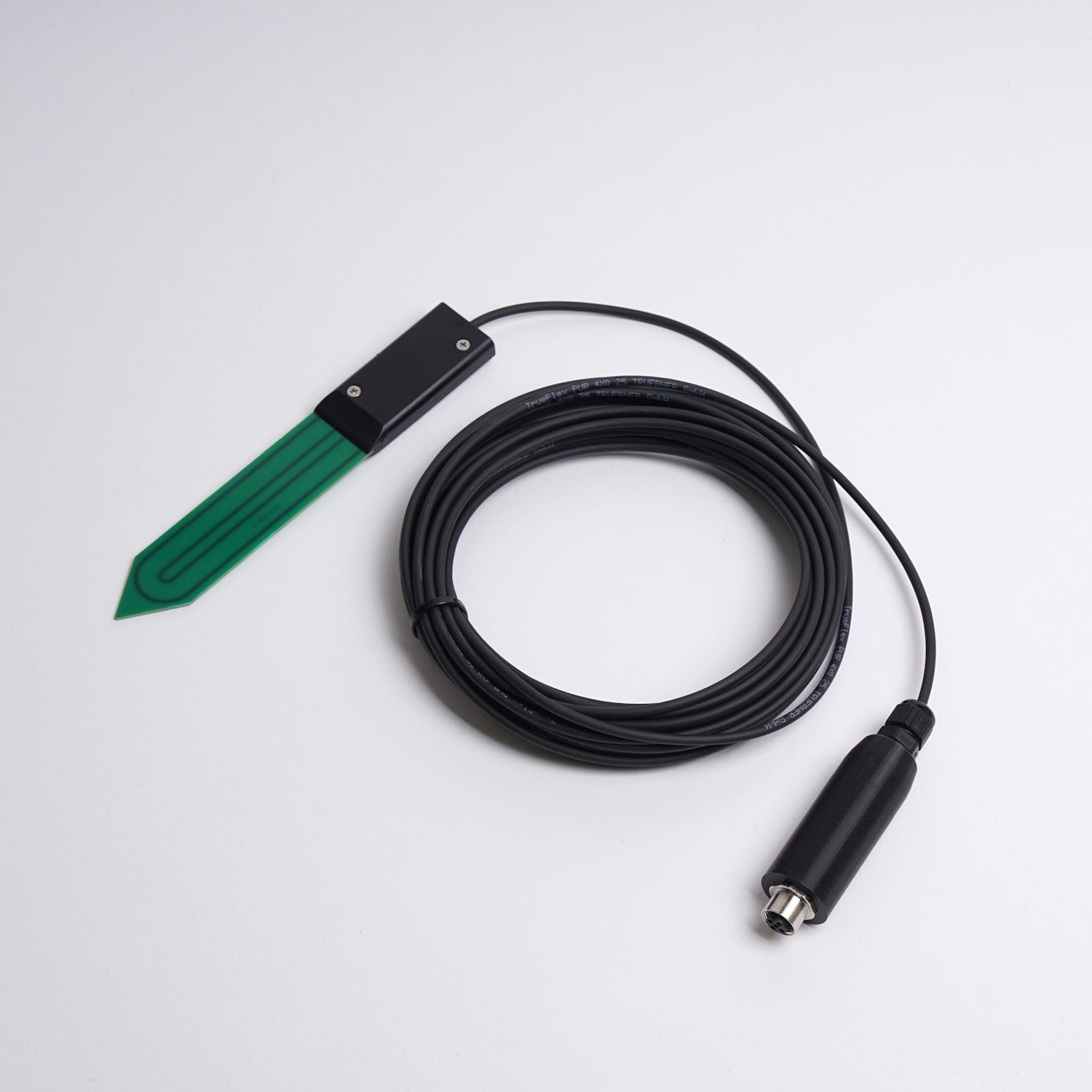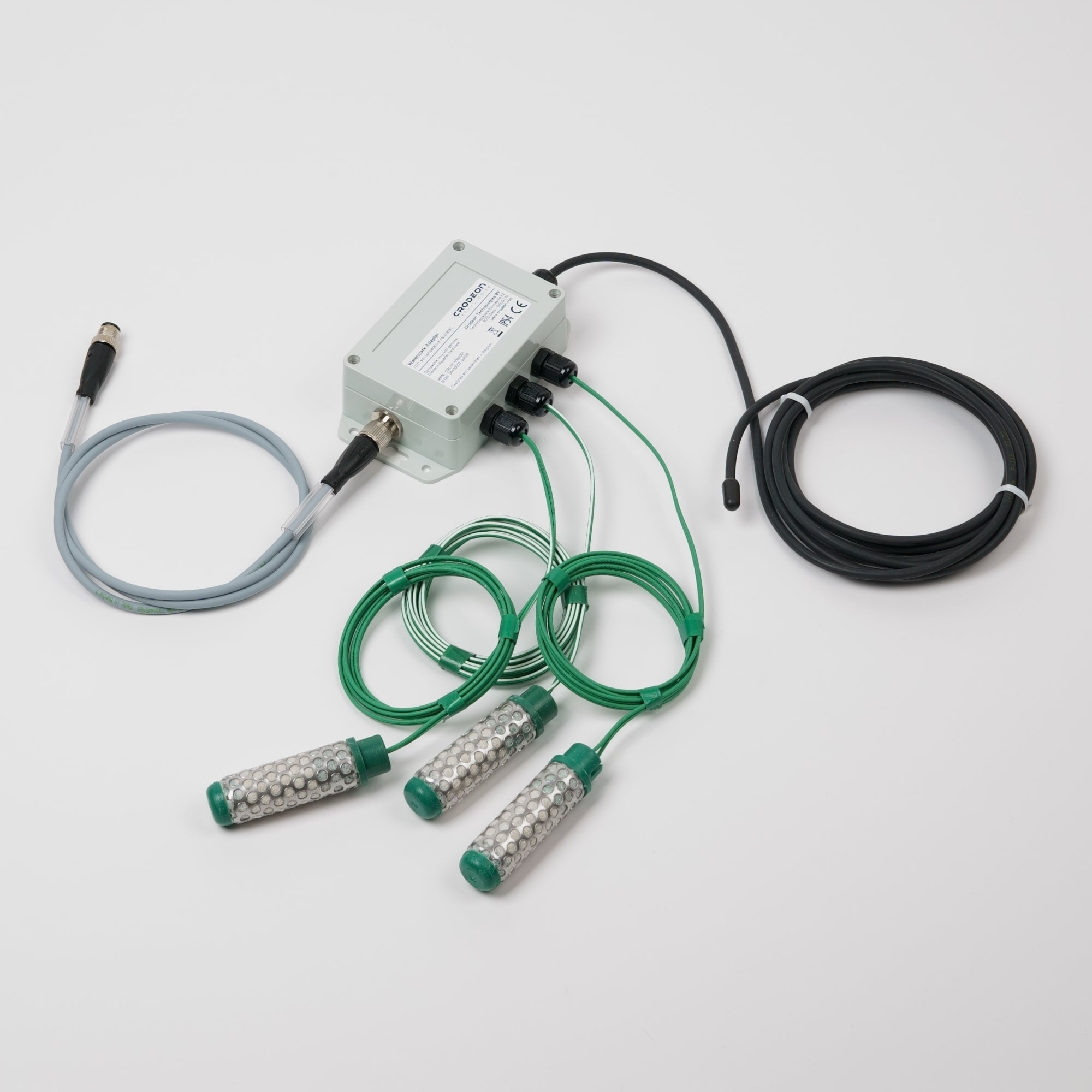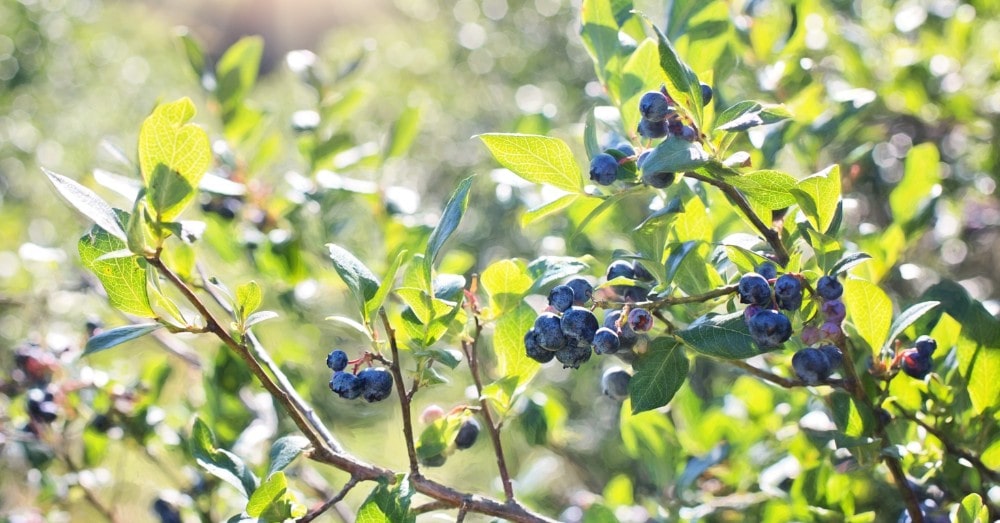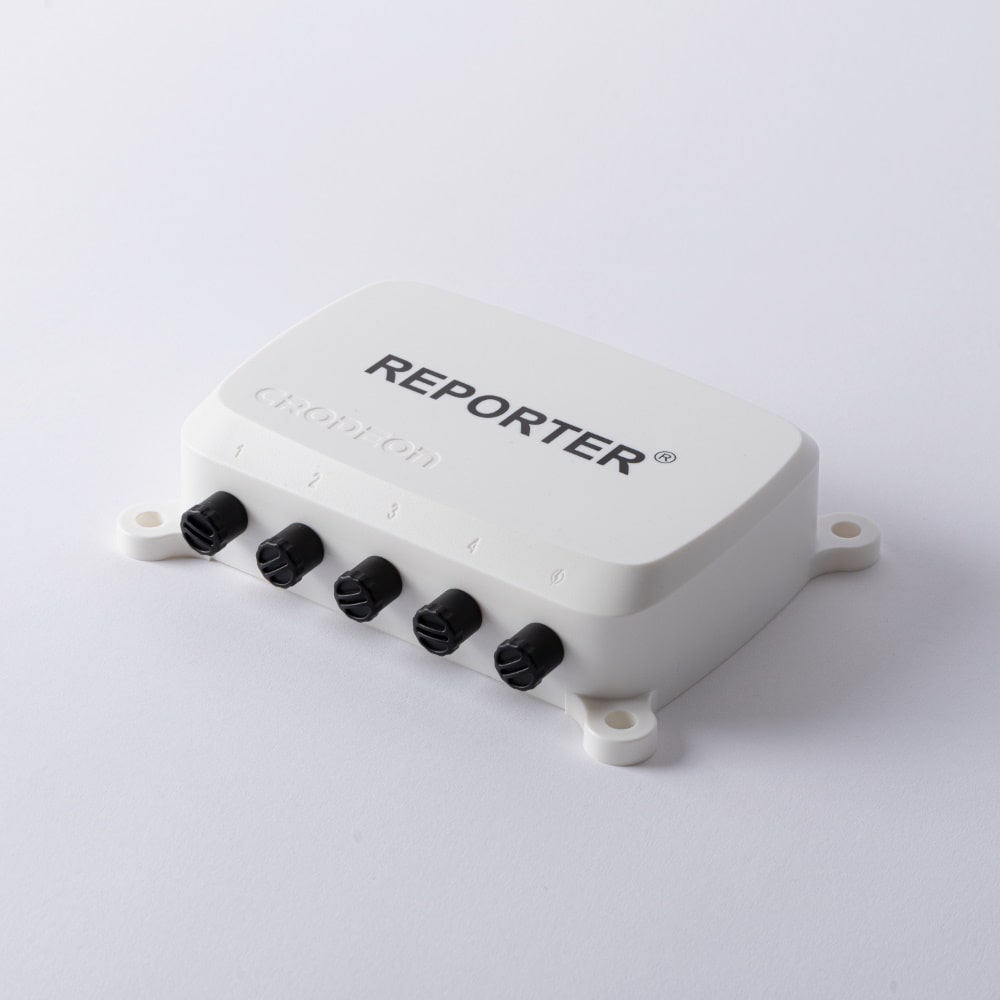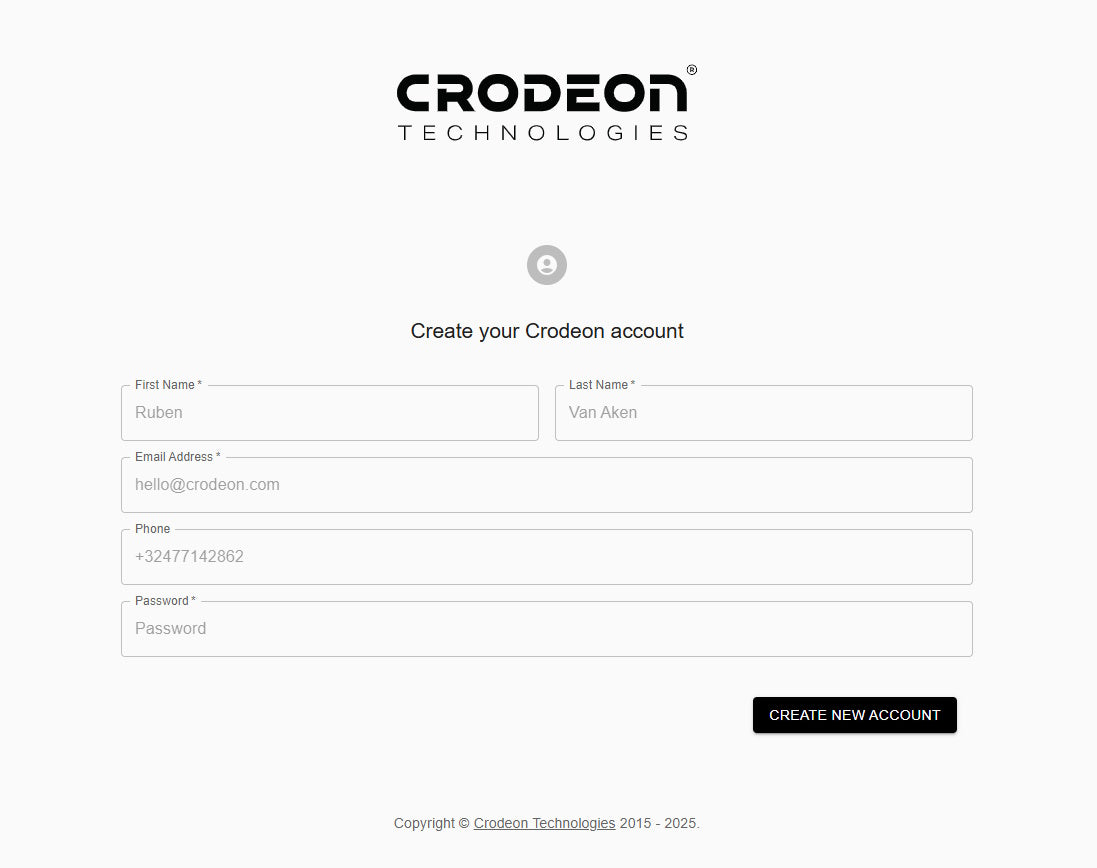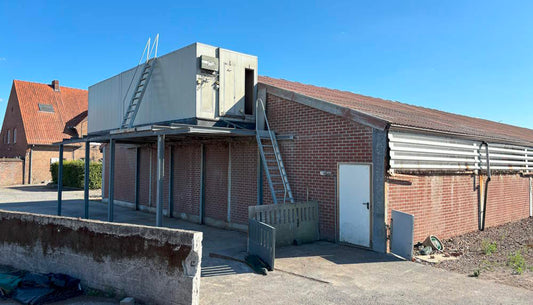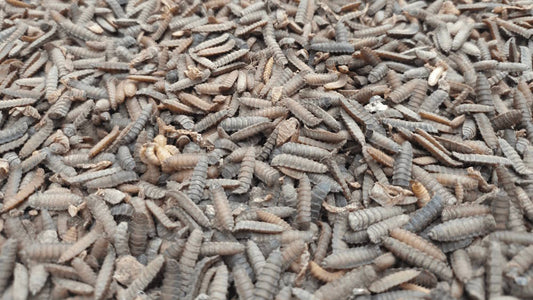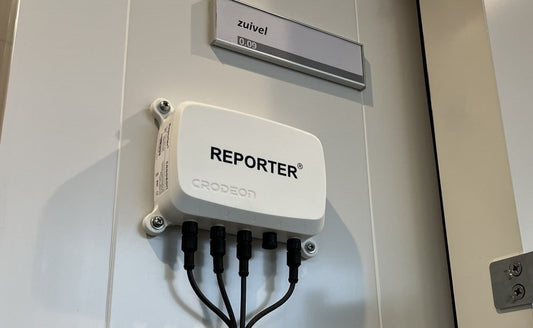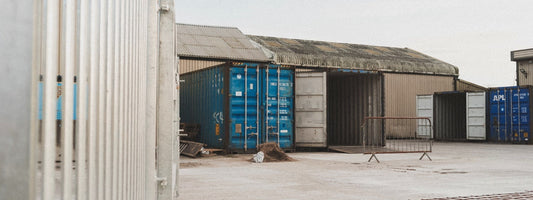Monitoring soil moisture contents for crop farming
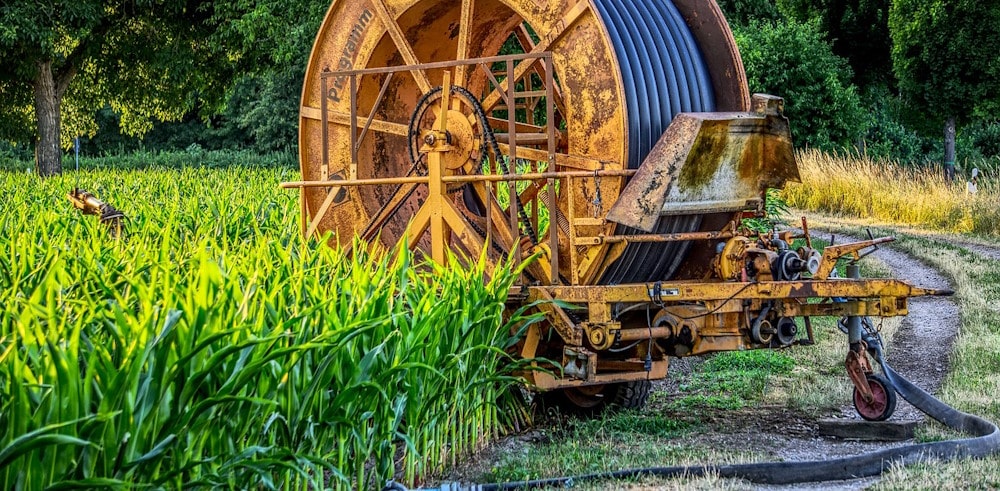
Water, CO2, and sunlight. They're crucial for a bountiful harvest, in the right balance at least. As a crop farmer, it's essential to keep a close eye on the moisture conditions of your fields to ensure your crops will grow as intended. Soil moisture monitoring is the easiest way to realise this.
In this blog, we will have a look at the importance of soil moisture measurement for vegetable farming, what types of sensors are available, how monitoring helps you save water, and how an automatic monitoring system can help your company.
Why soil moisture measuring is important
A lack of water will cause stunted growth in your crops, or in the worst case: an entire field of dried and shrivelled-up ex-plants. A surplus of water on the other hand will often cause the plants to rot and fruit or vegetables to burst open. The right moisture balance in your soil is the key to a great harvest and the best crop quality.
The impact of monitoring soil moisture
Not regularly measuring or monitoring your soil moisture level means that you run a greater risk of experiencing the following problems.
Moisture deficit:
- Poor seed germination
- Flavourless carrots
- Multicentred bulbs in onions
- Poor fruit development
Moisture surplus:
- Burst fruit
Moisture fluctuations:
Rapid changes in moisture levels or moisture fluctuation often lead to problems as the plants are unable to adjust as quickly as the soil humidity level does.
- Blossom End Rot in tomatoes
- Growth Cracks and splitting in tomatoes
- Hollow heart in potatoes
- Hollow stem in Brassica
No one wants a failed harvest. Detecting soil moisture issues in time means crop loss can be prevented, saving you thousands. Let's have a look at what sensor works best for your vegetables.
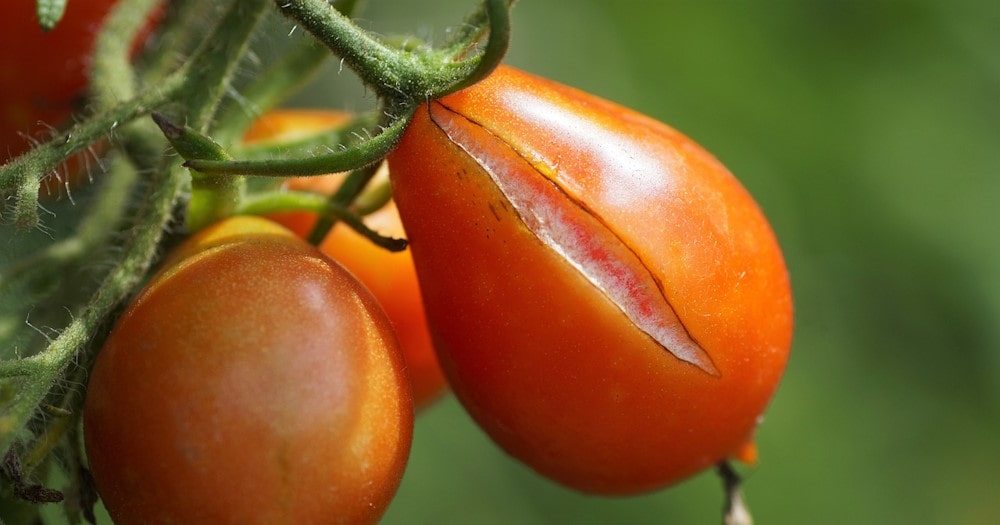
Types of soil moisture sensors
The easiest most precise way of measuring soil moisture levels is by monitoring soil water contents in the root zone. It eliminates the need for manual calculations, or irrigating controlled based on a schedule.
Two main types of sensor technologies are used when it comes to measuring the water availability of the soil:
- VWC (Volumetric Water Content)
- SWP (Soil Water Potential/Soil tension)
A volumetric water content sensor
This type of technology expresses soil water content in percentages. It represents the volume of liquid water per volume of soil. 1m3 of soil containing 500L of water will have a VWC of 50%. An example of such a sensor is the SMT100 by Truebner.
A tensiometric soil water sensor
Contrary to VWC, soil water tension is a measurement that reflects the amount of effort plant roots have to make to acquire water from the soil. The drier the soil, the higher the tension, and the more energy it costs. Saturated soil has a tension close to 0. These sensors express soil water potential (SWP) in (centi)bar. An example of such a sensor is the Watermark by Irrometer.
Water conservation
Traditional ways of irrigation often result in slight overirrigation to ensure the crops' needs are fulfilled. However, when it comes to large fields and years of overirrigation, the slight spillage starts to pile up to become a huge waste. Both financially and in resources. In a world where long periods of drought are only becoming worse, water conservation is paramount.
Irrigating only what's needed, when it's needed, is the only way to combat this water spillage and make irrigation sustainable. In many cases, cutting the amount of irrigation water by half is possible without affecting the yield.
Automated smart irrigation
Using soil humidity sensors attached to a monitoring system and connected to an irrigation system, can automate your irrigation based on the needs of your crops. The system works with thresholds: a minimum value and a maximum value. When the minimum value is reached, the irrigation will start. When the maximum value is reached, the irrigation will stop. And so on and so forth.
This way of precise irrigation allows your crops to have the right amount of water available to them when it's really needed.
A blueberry farming project led by Smart Growers, made this way of irrigation even smarter: their irrigation was based on a model that was fed with live and local weather data as well as measurements taken between the blueberry root zone. The result: a great yield of juicy blueberries while saving 50% of the irrigation water compared to traditional farming!

An automatic soil moisture monitoring system
You'll be able to save a lot of time and money when you choose to automate your soil moisture testing. There are several different options available that let you connect volumetric, tensiometric, or both kinds of soil humidity sensors to an IoT device for remote monitoring.
When the sensor device comes with an API, it can even be directly connected to a third party platform of software, like agricultural software.
Reporter
Don't want to choose between volumetric and tensiometric soil moisture sensors? You don't have to.
At Crodeon we designed Reporter, a plug & play sensor device that makes remote monitoring available to anyone, no matter their (technical) background. The intuitive design makes it easy to install the monitoring system, both physically as well as configuring the cloud platform (Crodeon Dashboard).
The Crodeon Dashboard is a browser-based web app that works in your favourite browser on your favourite device. Access real-time data, historical data, change settings, or respond to alarm notifications 24/7, no matter where you are. Every Reporter comes with a REST API to connect to third-party software, tools, or your existing systems.
Reporter is fully customisable and comes with four sensor connectors that allow you to connect four (different) sensors. The picture above shows a weather sensor, leaf wetness sensor, and a SMT100 VWC sensor. As we partner up with only the best sensor manufacturers, you can be sure of precise and accurate data.
The system is robust, and water- and weatherproof (IP67), connects to the GSM network using 2G/4G, and can be powered by a solar panel or grid power supply.
The easiest way to measure soil moisture in crop growing
Eliminate overhead, choose convenience, and get started with your own accessible and affordable monitoring project! Contact us or visit the Crodeon shop to view our full range of products.
Sources
Hoidal, N., & Sharma, V. (2020). Irrigation strategies for vegetables. University of Minnesota.
Schattman, R. E., Jean, H., Faulkner, J. W., Maden, R., McKeag, L., Campbell Nelson, K., Grubinger, V., Burnett, S., Erich, M. S., & Ohno, T. (2023, September 1). Effects of irrigation scheduling approaches on soil moisture and vegetable production in the Northeastern U.S.A. ScienceDirect.
Muñoz-Carpena, R., & Dukes, M. D. (2005, June). AUTOMATIC IRRIGATION BASED ON SOIL MOISTURE FOR VEGETABLE CROPS. University of Florida.

